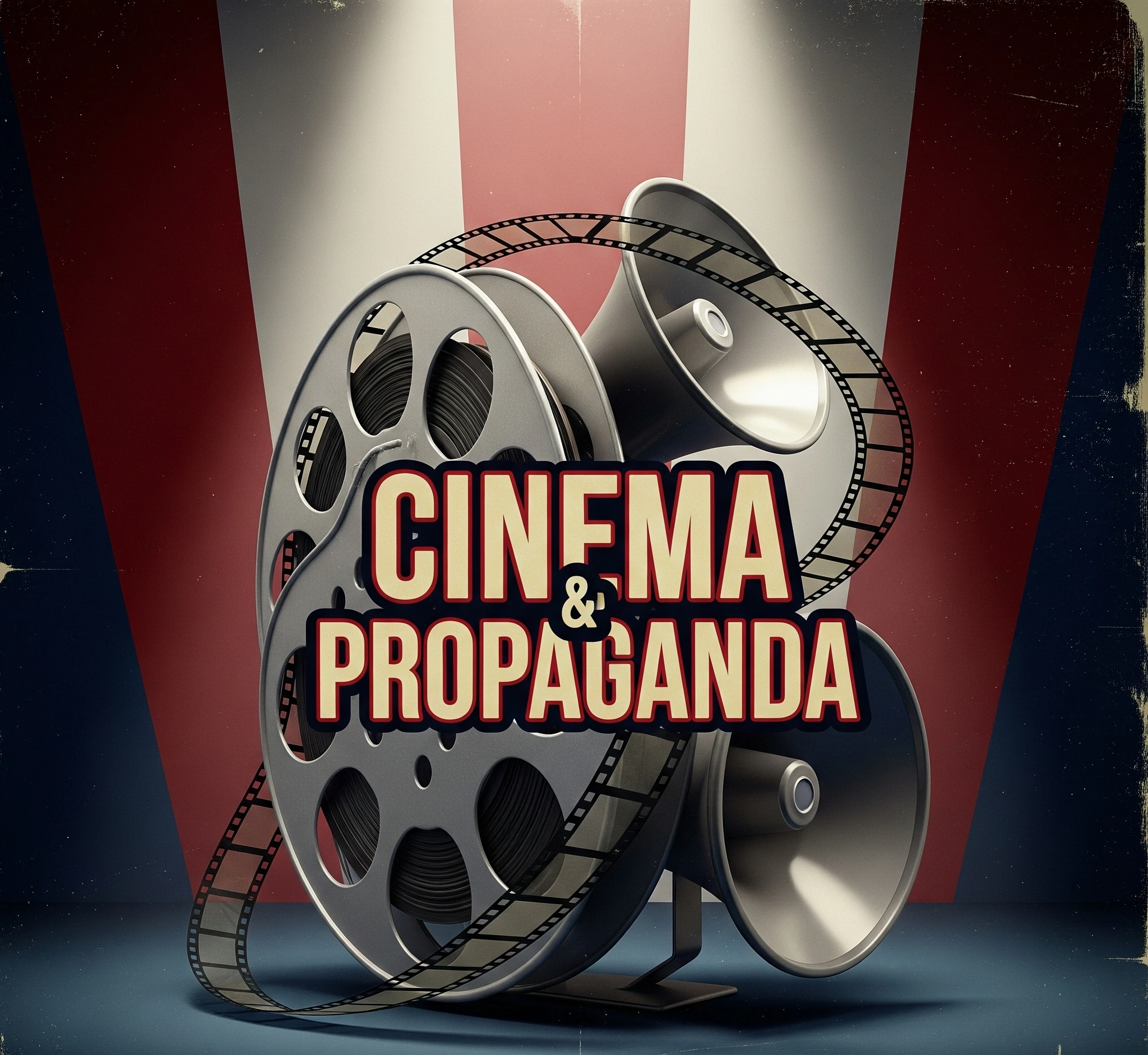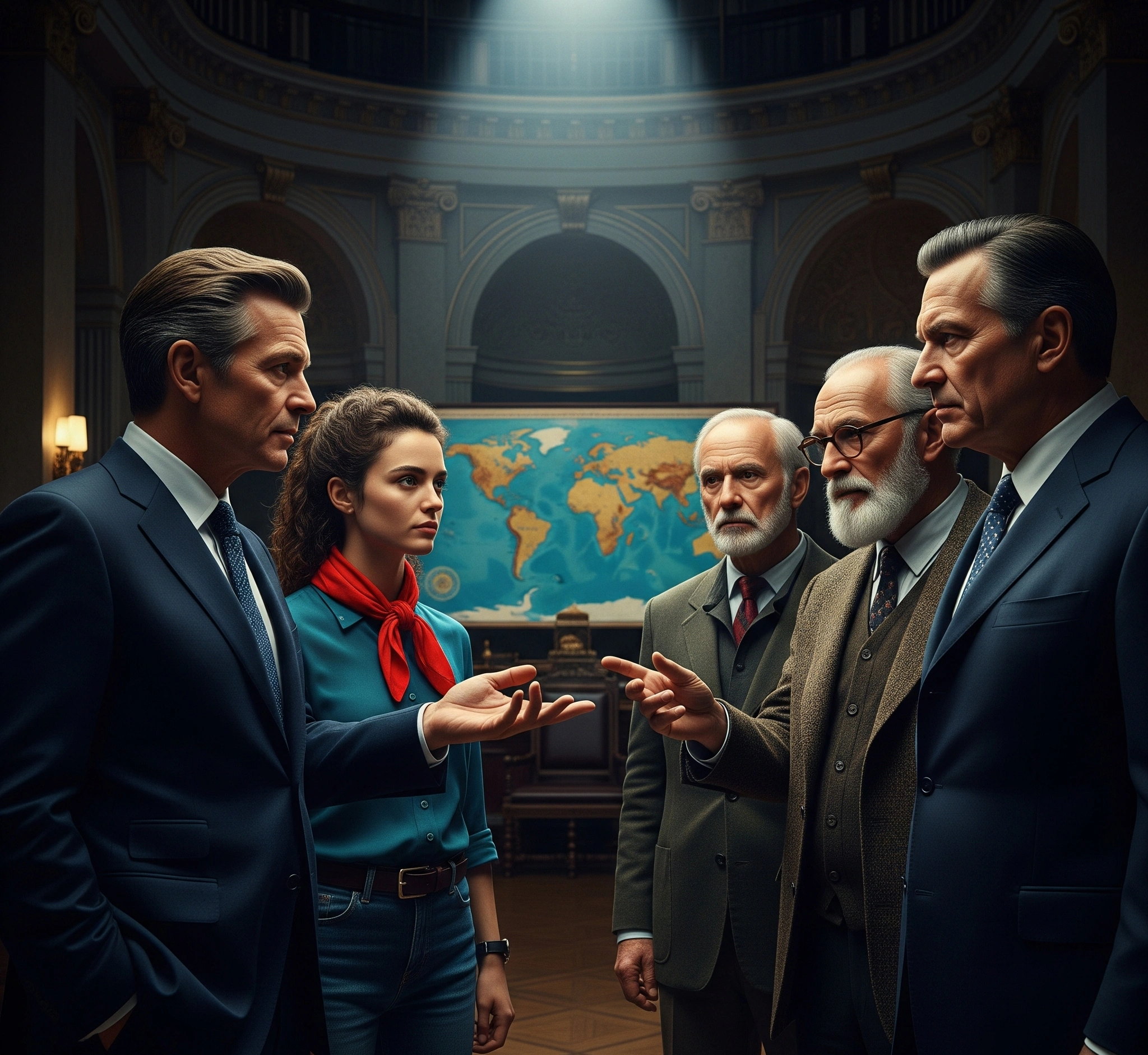Have you ever considered how the films you watch might subtly shape your beliefs, values, or even your political views? Cinema, often seen as mere entertainment, possesses an undeniable power to influence, provoke thought, and even sway public opinion. This creates a profound paradox: is film a harmless pastime, or can it be a potent tool for ideological dissemination? Indeed, it’s a common modern struggle: wanting to enjoy movies, yet feeling compelled to critically examine their underlying messages. This isn’t about conspiracy theories; rather, it’s a practical roadmap to help you understand the complex relationship between Cinema and Propaganda. Ultimately, we’ll demystify this dynamic, showing you that film is not just a passive experience; instead, it’s a profound psychological tool, offering practical wisdom and symbolic interpretations of human experience that can expand your critical media literacy and understanding of societal influence.
 Table of Contents
Table of Contents
- What is the Relationship Between Cinema and Propaganda?
- The Subtle Art of Influence: How Films Convey Ideology
- Case Studies: Iconic Examples of Political Films
- Navigating the Message: Developing Critical Media Literacy
- Cinema and Propaganda in the Digital Age: New Frontiers
- The Power of the Moving Image
- Call to Action
- Context and References
What is the Relationship Between Cinema and Propaganda?
The relationship between cinema and propaganda is complex and multifaceted. Propaganda, broadly defined, is information, especially of a biased or misleading nature, used to promote or publicize a particular political cause or point of view. Cinema, as a powerful mass medium, has historically been employed to disseminate such messages, whether overtly or subtly. This can range from direct state-sponsored films designed to shape public opinion to commercial movies that inadvertently reinforce certain societal norms or political ideologies. The medium’s ability to immerse viewers emotionally makes it particularly effective for conveying persuasive messages, often bypassing conscious critical thought.
The origins of propaganda in film can be traced back to the early 20th century, particularly during World War I and II, when governments recognized cinema’s potential for mass communication and persuasion. Filmmakers like Sergei Eisenstein and Leni Riefenstahl became key figures in this early era. Core components of cinematic propaganda include simplified narratives, clear heroes and villains, emotional appeals, and the strategic use of visual and auditory cues to elicit specific responses. Philosophically, this dynamic interprets the manipulation of public perception, offering a guide—not a prophecy—on how narratives can be used to shape belief systems. Fundamentally, this is knowledge, not magic, providing a framework for understanding media influence.
How Films Convey Ideology
Understanding how films convey ideological messages is crucial for developing media literacy. It’s not always about overt political statements. Instead, it highlights the subtle techniques filmmakers use to shape audience perception. Thus, analyzing these methods acts as a profound psychological tool for critical thinking.
Narrative Framing and Character Archetypes
Films often frame narratives in ways that subtly promote certain viewpoints. For instance, a story might present a particular political system as inherently good or evil, or depict certain groups of people as heroes or villains. Character archetypes, such as the selfless leader or the treacherous outsider, can reinforce these ideological positions. This, in turn, allows for a more profound connection to their struggles, triumphs, and sacrifices, as their journeys unfold naturally.
Emotional Manipulation and Identification
Filmmakers frequently use emotional appeals to foster identification with certain characters or causes. By eliciting empathy, fear, or anger, a film can guide the audience towards a desired emotional and ideological response. This subtle guidance ensures that viewers feel what the filmmakers intend them to feel, creating a powerful, shared experience. It offers symbolic interpretations of emotional journeys and narrative arcs.
Symbolism and Visual Rhetoric
Visuals and symbols play a significant role in cinematic propaganda. Flags, iconic landmarks, specific colors, or even recurring imagery can carry strong ideological connotations. The way these elements are presented—through camera angles, lighting, or editing—can further reinforce a particular message. This creative prowess demonstrates that vision transcends gender, providing a powerful framework for understanding artistic expression.
Iconic Examples of Political Films
To truly appreciate the complex interplay between **Cinema and Propaganda**, let’s explore some pivotal films that exemplify this dynamic. Each film presents a unique approach to conveying ideological messages, offering moments of profound realization about the power of the moving image.
 Triumph of the Will (1935)
Triumph of the Will (1935)
- Meaning/Interpretation: Directed by Leni Riefenstahl, this Nazi propaganda film meticulously documents the 1934 Nuremberg Rally. It is a chilling example of how cinematic artistry can be used to glorify a political regime and its leader, creating an awe-inspiring, almost mythical image of power.
- Dualities/Paradoxes: The film presents the paradox of aesthetic beauty used to promote a destructive ideology. This leads to an ‘Aha!’ moment about the seductive nature of propaganda and the importance of critical discernment.
The Great Dictator (1940)
- Meaning/Interpretation: Charlie Chaplin’s satirical masterpiece directly parodies Adolf Hitler and Nazism. It uses humor and pathos to deliver a powerful anti-war and anti-fascist message, contrasting the destructive nature of totalitarianism with the inherent goodness of humanity.
- Dualities/Paradoxes: The film highlights the paradox of using comedy to address grave political issues. This leads to a profound realization about the power of satire as a tool for social critique and resistance.
Dr. Strangelove (1964)
- Meaning/Interpretation: Stanley Kubrick’s black comedy satirizes the Cold War paranoia and the absurdity of nuclear deterrence. It exposes the irrationality of political leaders and military strategists, offering a bleak yet humorous commentary on the potential for self-destruction.
- Dualities/Paradoxes: The film explores the paradox of seeking peace through the threat of ultimate destruction. This leads to an ‘Aha!’ moment about the dangers of unchecked power and the thin line between sanity and madness in political discourse.
All the President’s Men (1976)
- Meaning/Interpretation: This political thriller recounts the true story of Bob Woodward and Carl Bernstein’s investigation into the Watergate scandal. It champions investigative journalism and the pursuit of truth, portraying the media as a crucial check on government power.
- Dualities/Paradoxes: The film highlights the paradox of uncovering hidden truths against powerful institutional resistance. This leads to a powerful ‘Aha!’ moment about the importance of transparency and accountability in a democratic society.
V for Vendetta (2005)
- Meaning/Interpretation: Set in a dystopian future Britain under a totalitarian regime, this film explores themes of anarchism, fascism, and individual rebellion. It depicts a masked vigilante’s fight against oppression, inspiring viewers to question authority and fight for freedom.
- Dualities/Paradoxes: The narrative frequently explores the paradox of using violent means to achieve liberation. This leads to a profound realization about the complexities of resistance and the blurred lines between hero and terrorist.
Developing Critical Media Literacy
Understanding the interplay between **Cinema and Propaganda** isn’t enough; real transformation requires concrete engagement and critical analysis. These actions, therefore, are empowering self-practices, not mystical rituals to control external forces.
Question the Source and Context
Before accepting a film’s message, consider its historical, political, and cultural context. Who made the film? What was their agenda? Understanding the background can reveal underlying ideological motivations. This direct engagement is crucial for increasing visibility and demand for their films.
Analyze Narrative Choices
Pay attention to how the story is told. How are characters portrayed? Are there clear heroes and villains? What emotions are being evoked? Analyzing these narrative choices helps uncover the film’s persuasive techniques. This collaborative exploration enhances critical thinking.
Seek Diverse Perspectives
Don’t rely on a single film or media source for your understanding of complex issues. Actively seek out alternative viewpoints and counter-narratives. Comparing different portrayals of the same event or ideology strengthens your ability to form independent judgments. Your advocacy, however small, contributes to a more inclusive and equitable future for filmmaking.
Cinema and Propaganda in the Digital Age: New Frontiers
The timeless relevance of **Cinema and Propaganda** in the digital age is undeniable. Films, documentaries, and even short-form video content on social media continue to be powerful tools for shaping narratives and influencing public opinion. The ease of content creation and global distribution means that ideological messages can spread faster and wider than ever before. This includes navigating complex emotions, dealing with information overload, and finding connection in an increasingly digital world. Furthermore, the rise of deepfakes and AI-generated content introduces new challenges in discerning truth from manipulation, making media literacy more critical than ever.
By engaging with this topic, you gain tangible benefits. These include an enhanced capacity for critical thinking, a nuanced understanding of media influence, and practical wisdom for navigating the complex information landscape of the 21st century. In essence, it’s not just entertainment; it’s a profound cultural tool that fosters discernment, analytical skills, and a broader understanding of how narratives shape our world, reflecting the ongoing evolution of media and society.
The Power of the Moving Image
As you journey through the captivating world where **Cinema and Propaganda** intersect, remember that each film is more than just a story. Instead, it’s an invitation to critically examine the messages it conveys and the power it wields. From historical examples of overt propaganda to subtle ideological undertones in modern blockbusters, film remains a potent force. It demystifies the art of cinematic persuasion and empowers you to become a more discerning viewer. Ultimately, the wisdom contained within these cinematic universes is not a prophecy, but a profound reflection of our collective struggle for truth, freedom, and understanding, echoing the timeless power of the moving image.
Call to Action
Ready to sharpen your critical eye?
EXPLORE MORE POLITICAL FILMS HERE
LEARN ABOUT MEDIA LITERACY
Context and References
Internal Links to Related Articles:
- Read more about the universal principles of cinematic storytelling here.
External References (If Applicable):
- Wikipedia: Propaganda: https://en.wikipedia.org/wiki/Propaganda
- Britannica: Propaganda: https://www.britannica.com/topic/propaganda
- Media Literacy Now: https://medialiteracynow.org/
Disclaimer: This content is provided for educational and cultural understanding. Fictional narratives and film recommendations are part of a rich tradition, offering guidance for appreciation and entertainment, not deterministic prophecies or absolute judgments.
